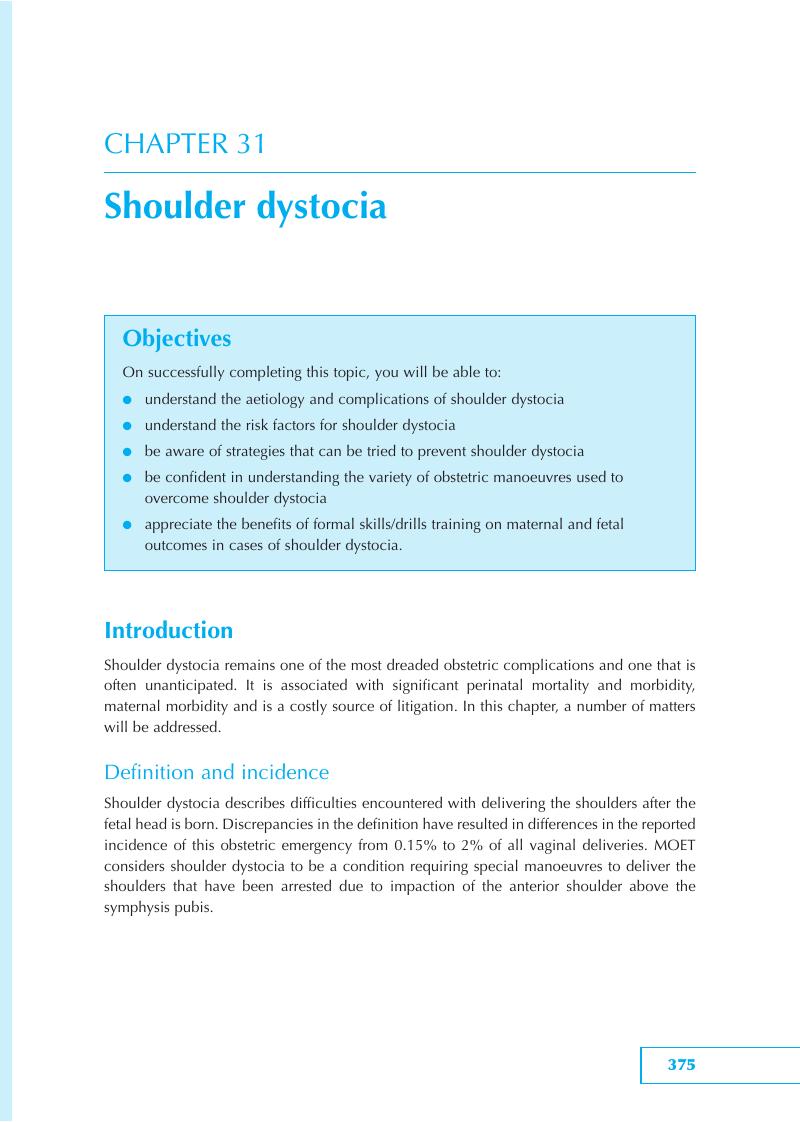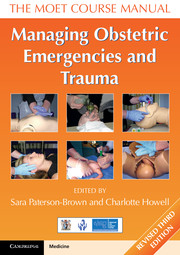Book contents
- Managing Obstetric Emergencies and Trauma
- Copyright page
- Dedication
- Contents
- Working Group
- About the authors
- Book part
- Glossary
- Section 1 Introduction
- Section 2 Recognition
- Section 3 Resuscitation
- Section 4 Trauma
- Section 5 Other medical and surgical emergencies
- Section 6 Obstetric emergencies
- Chapter 24 Pre-eclampsia and eclampsia
- Chapter 25 Major obstetric haemorrhage
- Chapter 26 Caesarean section
- Chapter 27 Placenta accreta and retained placenta
- Chapter 28 Uterine inversion
- Chapter 29 Ruptured uterus
- Chapter 30 Ventouse and forceps delivery
- Chapter 31 Shoulder dystocia
- Chapter 32 Umbilical cord prolapse
- Chapter 33 Face presentation
- Chapter 34 Breech delivery and external cephalic version
- Chapter 35 Twin pregnancy
- Chapter 36 Complex perineal and anal sphincter trauma
- Chapter 37 Symphysiotomy and Destructive Procedures
- Chapter 38 Anaesthetic complications in obstetrics
- Section 7 Triage and transfer
- Section 8 Human issues
- Index
- References
Chapter 31 - Shoulder dystocia
from Section 6 - Obstetric emergencies
Published online by Cambridge University Press: 05 June 2016
- Managing Obstetric Emergencies and Trauma
- Copyright page
- Dedication
- Contents
- Working Group
- About the authors
- Book part
- Glossary
- Section 1 Introduction
- Section 2 Recognition
- Section 3 Resuscitation
- Section 4 Trauma
- Section 5 Other medical and surgical emergencies
- Section 6 Obstetric emergencies
- Chapter 24 Pre-eclampsia and eclampsia
- Chapter 25 Major obstetric haemorrhage
- Chapter 26 Caesarean section
- Chapter 27 Placenta accreta and retained placenta
- Chapter 28 Uterine inversion
- Chapter 29 Ruptured uterus
- Chapter 30 Ventouse and forceps delivery
- Chapter 31 Shoulder dystocia
- Chapter 32 Umbilical cord prolapse
- Chapter 33 Face presentation
- Chapter 34 Breech delivery and external cephalic version
- Chapter 35 Twin pregnancy
- Chapter 36 Complex perineal and anal sphincter trauma
- Chapter 37 Symphysiotomy and Destructive Procedures
- Chapter 38 Anaesthetic complications in obstetrics
- Section 7 Triage and transfer
- Section 8 Human issues
- Index
- References
Summary

- Type
- Chapter
- Information
- Managing Obstetric Emergencies and TraumaThe MOET Course Manual, pp. 374 - 387Publisher: Cambridge University PressPrint publication year: 2016



